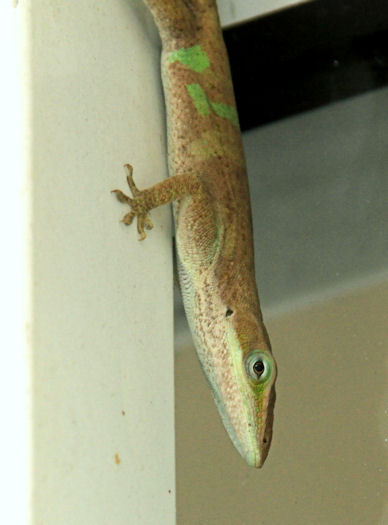
Bermuda only has one native lizard, a skink. However, during the first half of the 20th century, three anole species were introduced. The first, the beautiful Anolis grahami from Jamaica, quickly spread over most of the archipelago, as David Wingate reported in 1965. However, Wingate noted that the subsequent two species, A. leachi from Antigua and A. extremus from Barbados achieved only more localized distributions.
Thirty-one years later, I published a follow-up survey. By that time, A. grahami had conquered the entire entire and A. leachi had greatly increased its range, but A. extremus was still limited to a far corner on the west end of Bermuda.
Joe Macedonia and colleagues have now returned for a 20-year follow-up, now 51 years after Wingate’s paper. In a paper just published in Herpetological Review, hey find that A. leachi is now also found throughout the Bermudian archipelago. Curiously, however, A. extremus has not advanced at all, with still a very small distribution in the west (see map below). The explanation doesn’t seem to be habitat availability, because there is no obvious difference between where A. extremus occurs and where it doesn’t. Macedonia et al. conclude, as I did, that it is competition from the very similar A. grahami that is preventing A. extremus from expanding its range.
Macedonia et al. also provide a wealth of information on the habitat use of all three species. And there’s a kicker–A. sagrei has recently been introduced to Bermuda. Will it expand its range and, if so, how quickly. Notably, A. sagrei is considerably more terrestrial than the other anoles on Bermuda, so the opportunity seems to exist.














